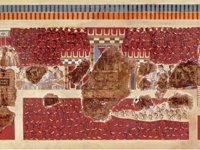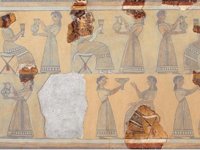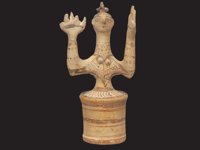interkriti®
YOUR GATEWAY TO CRETE
Crete Image Library
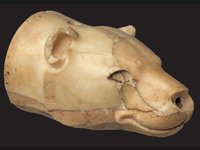
Knossos - The Lioness' head Vase
Rhyton in the form of a lioness's head of off-white translucent limestone, a work of exceptional plasticity rendered naturalistically. The inlays in the snout and eyes, possibly of jasper and crystal, like those on the bull's head rhyton (found also in Knossos) have not been preserved. From the west wing Upper Halls of Knossos Palace. Neopalatial Period 1600- 1500 BC - Heraklion Museum.
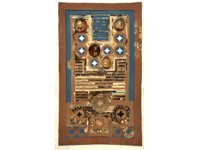
The Draughtboard
The so-called Draughtboard (Zatrikion) was constructed of ivory, glass paste, rock crystal and sheets of gold and silver on a wooden base. The four ivory draughts corresponded to the circles with the white lozenges. A luxury royal board game, indicating the lifestyle in Minoan palaces and the high quality output of Minoan miniature art workshops. Found in the palace of Knossos (1600 - 1500 BC) - Heraklion Museum

Knossos - The fresco of the Procession
The fresco of the procession, representing groups of men and women in processional array, carrying precious obcects. A fragment of the magnificent painting that decorated the walls of the "Processional Corridor" from the west Court to the Great Propylaeum of the palace at Knossos. - Neopalatial Period (1500 - 1450 BC) - Heraklion Museum
 |
|
|

